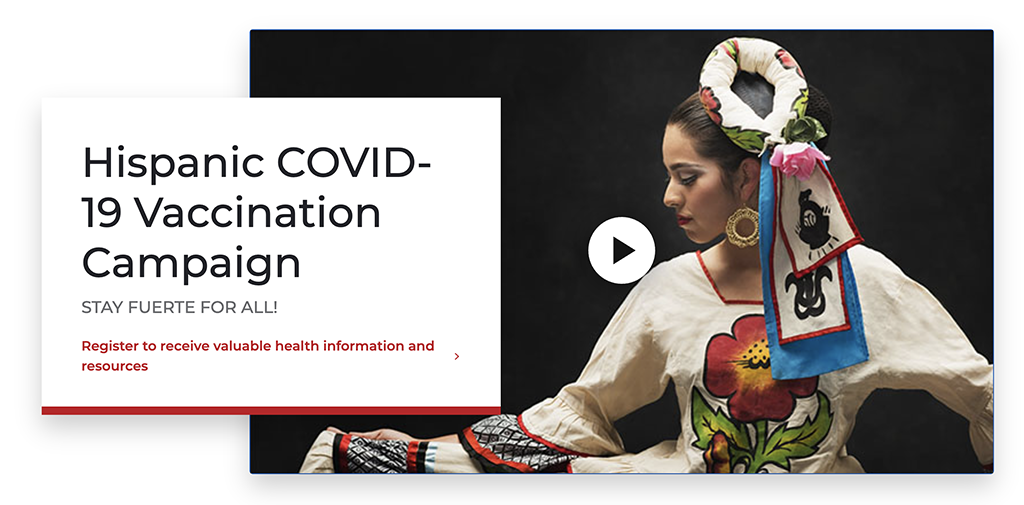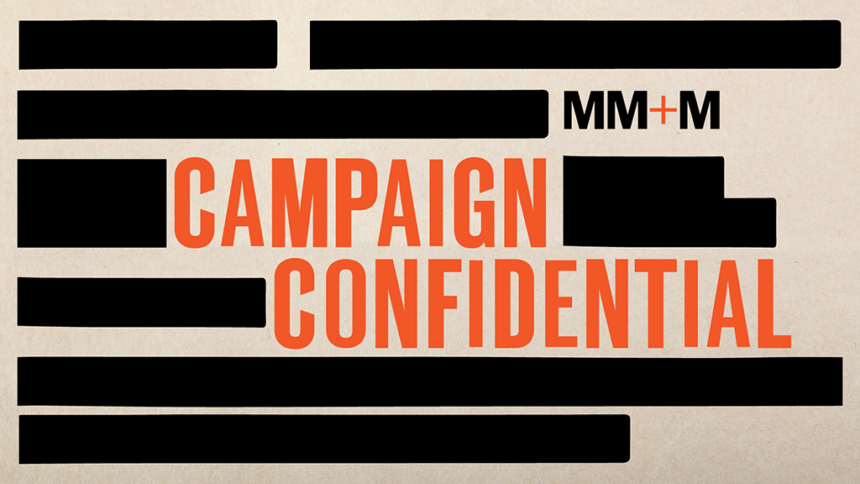As efforts to encourage COVID-19 vaccination continue in the United States, one group of Americans has presented unique challenges: Latinos.
While the gap between their vaccination rates and those of non-Hispanic whites has narrowed recently, it still remains. Latinos are also 2.5 times more likely to die of COVID-19 than other groups, when adjusted for age. A variety of possible causes are cited for that difference, including the prevalence of underlying risk factors, health inequities and larger household sizes (which render social distancing more difficult).
To narrow that gap, the American Heart Association has debuted “Stay Fuerte for All.” The effort offers information on COVID-19 and vaccines in direct, plain language – in both English and Spanish — through animated shorts, PSAs, social media and other outreach, much of it delivered through local partners.
The AHA’s COVID-19 work dates back to the early days of the pandemic and was originally focused on individuals who experienced heart disease, stroke, diabetes, high-blood pressure or obesity. Through its work with the Ad Council and the COVID Collaborative, the organization has conducted research, including countless man-on-the-street interviews, to determine top sources of hesitancy around the vaccine.
While in some other communities there exists deep-rooted suspicion of vaccines, AHA EVP of marketing and communications Katrina McGhee pointed to a more complicated set of issues in the Latino community.
“It is primarily the prevalence of misinformation due to the lack of in-language, at-literacy-level content,” she explained. “Much of the information that is available uses medical jargon that results in confusion. Many people also have questions about vaccines being free and what documentation is required to receive them.”
That’s why “Stay Fuerte for All” is aimed at, in McGhee’s words, “the entire Hispanic ecosystem”: multi-generational households that are Spanish-dominant, English-dominant or bilingual in the top 25 Latino markets.
Lessons from earlier Latino-focused campaigns helped the AHA shape “Stay Fuerte for All,” McGhee noted.
“We have learned that Spanish language is not enough,” she said. “It is not just important that audiences understand the words, but that they align with the experience as well.”

In the case of “Stay Fuerte for All,” this meant creating a campaign that focused on familial ties, which the AHA sees as especially important culturally in the Latino community. In addition, AHA research indicated that Gen-Z and Millennials are key influencers in Hispanic households and are often trusted by older relatives when it comes to healthcare decisions. This elevated the importance of social media within the campaign’s channel mix.
The Latino community is far from monolithic, obviously, so the AHA chose to empower local partners to deliver key messaging components.
“We can take a campaign that is culturally relevant, use imagery from a variety of different backgrounds – Mexican-American, Cuban-American, Puerto Rican and more — and then customize it for that market with partnerships that use trusted voices,” McGee said. Partners range from Univision and Telemundo to local Spanish-language radio.
On a national level, one of the most important voices has been Dr. Eduardo Sanchez, the AHA’s chief medical officer for prevention. “The fact that he can communicate in Spanish with credibility as a health care professional while being culturally relevant sets this campaign apart,” McGhee said.
As for what comes next, the organization’s focus on battling misinformation and addressing specific health-related concerns will extend well beyond “Stay Fuerte for All.”
“All of us doing vaccine work in the public health space have reached a place where we have to be plainspoken and address directly the misinformation,” McGee continued. “When you can do that in a way that is culturally relevant and at the right literacy level, it lands differently. People can absorb more of the information.”
AHA estimated that the campaign will result in 138 million earned media impressions. It has already generated 210,000 engagements across Facebook and Twitter.
“All of our vaccine work will evolve over time based on what is needed — and this campaign will likely morph into something about boosters, or the flu and vaccines, or whatever the next public health issue is,” McGhee said. “We have created a conduit for communication that will lead to longer, healthier lives.”







